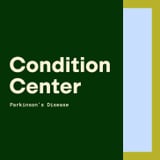Parkinson’s disease, a degenerative brain condition primarily marked by the loss of muscle control, has been thrust into the media over the years in film and television. But there’s still a ton of misunderstanding about the disease – including the pervasive idea that Parkinson’s only happens to older adults. While the condition is age-related, Parkinson’s can impact adults as young as 20, per the Cleveland Clinic, especially if there’s a genetic predisposition.
In fact, “Parkinson’s disease is the fastest growing neurodegenerative disease worldwide,” says Vikram Khurana, MD, PhD, chief of the Division of Movement Disorders at Brigham and Women’s Hospital.
Ahead, Dr. Khurana breaks down everything you need to know about Parkinson’s disease, including early symptoms, what causes Parkinson’s, and how Parkinson’s disease is treated.
Experts Featured in This Article:
Vikram Khurana, MD, PhD, is the chief of the Division of Movement Disorders at Brigham and Women’s Hospital and Harvard Medical School. His primary research interest is in neurodegenerative disorders, with a focus on Parkinson’s disease.
What Is Parkinson’s Disease?
More than 10 million people are living with Parkinson’s worldwide and around 1 million in the US, according to the Parkinson’s Foundation.
“It’s a disease in which there is loss of brain cells (neurons), most characteristically neurons that secrete dopamine,” Dr. Khurana explains. The loss of these dopamine-producing neurons is often caused by the abnormal accumulation of a particular protein in the brain called “alpha-synuclein,” which is shown to clump in vulnerable neurons in patients with Parkinson’s.
Dopamine is one of the most important neurotransmitters. “When your brain sends activation signals that tell your muscles to move, it fine-tunes your movements using cells that require dopamine. That’s why lack of dopamine causes the slowed movements and tremors symptoms of Parkinson’s disease,” the Cleveland Clinic reports. As the disease progresses, these symptoms intensify.
What Are the Stages of Parkinson’s Disease?
Parkinson’s disease is a heterogeneous condition, which means it’s caused by different factors in different patients, and therefore can progress differently as well. But experts tend to refer to five different stages.
- Stage 1: This is considered early-stage Parkinson’s disease, usually involving mild symptoms that do not impact daily activities.
- Stage 2: This is still an early-stage, but visible symptoms like tremors and rigidity start to become more apparent and severe.
- Stage 3: At this mid-stage, loss of balance is a hallmark.
- Stage 4: Symptoms are now disabling, walking may require a cane, and living alone is not suggested.
- Stage 5: This is the most advanced stage of Parkinson’s where full-time care is required and standing and walking is likely impossible.
What Are the Symptoms of Parkinson’s Disease?
Symptoms of Parkinson’s disease vary from person to person, but also from stage to stage. Dr. Khurana broke down the symptoms by progression levels below.
Early-onset symptoms of Parkinson’s:
- Constipation
- Loss of smell
- Acting out nightmares
- Mood disturbances
Eventually, the patient usually presents to a physician because of the following more noticeable symptoms:
- Altered movement – slowness, rigidity, loss of arm swing and facial expression
- Shaking of the limbs (“tremor”)
- Loss of balance and falls
- Diminished handwriting
- Softening of voice
In the later stages, patients may also experience the following:
- Disturbances of bowel, bladder, blood pressure, sexual function, sweating, and saliva control (also known as autonomic disturbances)
- Dementia
What Causes Parkinson’s Disease?
There’s no one answer to what causes Parkinson’s. In general, research into the various factors that play a role in the origin and progression of the condition is still ongoing. But a combination of genetic factors and environmental factors likely play a crucial role in the development and risk factors of Parkinson’s disease.
- Genetics: “In some patients, there is a very strong genetic component and it runs generation to generation in a family,” Dr. Khurana says. But this is the exception rather than the rule. “Mostly it arises without a clear family history, but there is likely a genetic aspect to this [condition] in every patient.”
- Environmental factors: Things like pesticides and solvents, air pollution, and viruses have all been tied to the disease. Concussions and head injuries may be associated with an increased risk of Parkinson’s. “Caffeine and smoking have been interestingly associated with decreased risk,” Dr. Khurana adds.
How Is Parkinson’s Disease Diagnosed?
There isn’t one specific test to diagnose Parkinson’s disease. “Usually, it’s a clinical diagnosis based on the experience of a movement disorders neurologist to recognize highly specific patterns in the patient’s symptoms and physical examination,” Dr. Khurana says. An expert may also rely on several tests during the diagnosis process:
- Brain scan: Loss of dopamine neurons can be diagnosed with a brain scan, called a SPECT or dopamine transporter scan.
- MRI: An MRI is not typically helpful in making the diagnosis but can rule out other diseases that can sometimes mimic Parkinson’s disease.
- Alpha-synuclein test: This test can be taken from spinal fluid, skin, nasal brushing, and – soon, hopefully, Dr. Khurana says – the blood. “[It] has transformed our ability to more reproducibly diagnose Parkinson’s disease,” he says.
How Is Parkinson’s Disease Treated?
“The mainstay of treatment are symptomatic treatments,” Dr. Khurana says. “These can be extremely effective for years and include dopamine (Levodopa) and related medications for the movement symptoms.” For some clients, deep brain stimulation and focused ultrasound may also help mitigate certain symptoms like tremors.
Beyond the motor symptoms, issues related to disturbances in bowel, bladder, mood, cognitive function, and sleep can often be treated well with targeted medications and therapies. “What we do not yet have is a definitive drug to slow down disease progression,” Dr. Khurana says. “There are many efforts underway, from GLP-1 agonists (similar to the blockbuster anti-obesity drugs [Ozempic and Wegovy]) to antibodies and drugs directed against alpha-synuclein, to stem-cell transplantation, that may lead to more effective treatments, including those that slow down disease progression or prevent the disease form occurring.” But there’s still a long way to go on the development front.
Parkinson’s disease is not a fatal condition, but its symptoms can significantly affect quality of life and play a role in a person’s cause of death. The condition typically occurs later in life (it’s more likely after the age of 60), and there’s a life expectancy of 14.5 years after diagnosis.
Alexis Jones is the senior health and fitness editor at PS. Her passions and areas of expertise include women’s health and fitness, mental health, racial and ethnic disparities in healthcare, and chronic conditions. Prior to joining PS, she was the senior editor at Health magazine. Her other bylines can be found at Women’s Health, Prevention, Marie Claire, and more.




